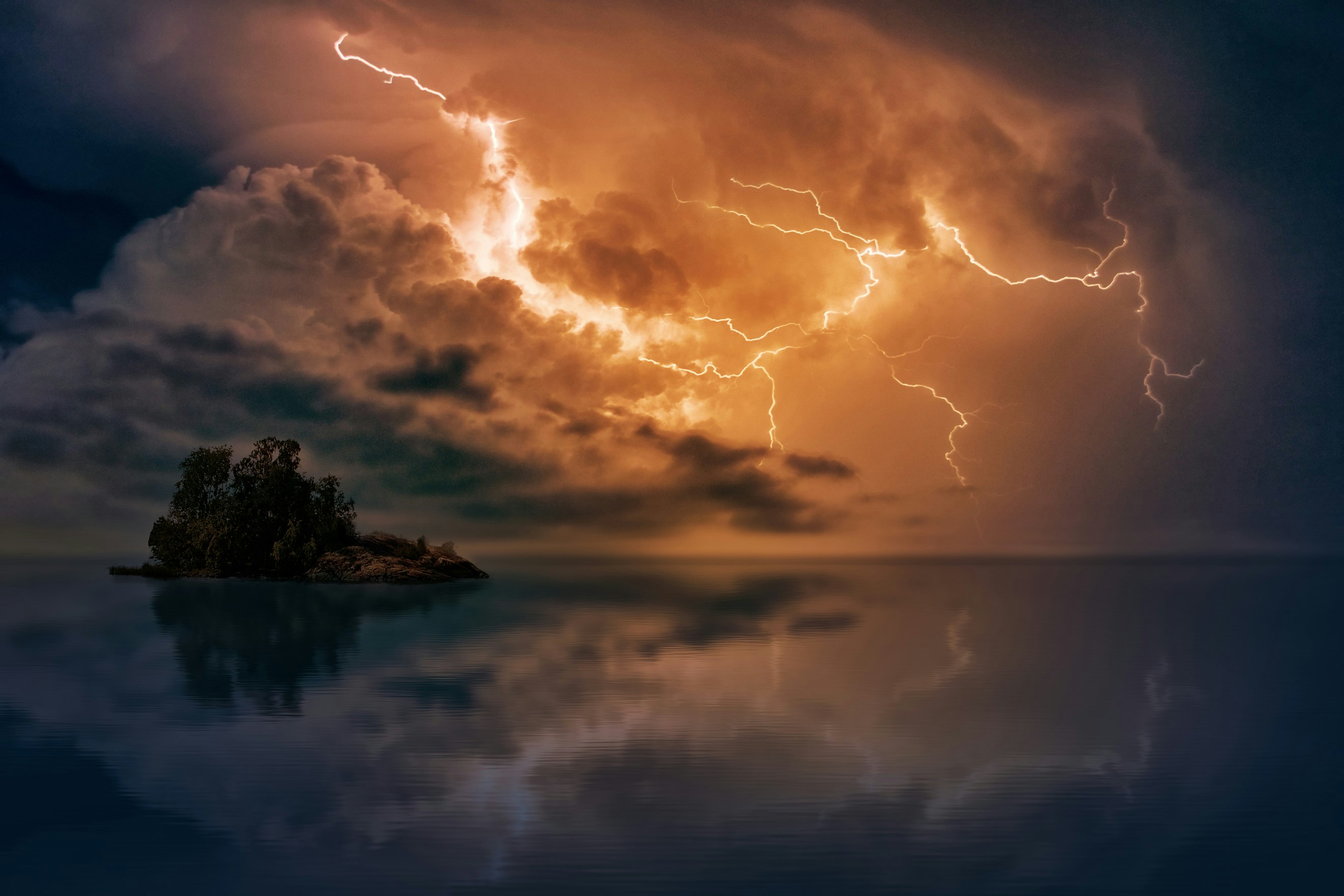The Science Behind Hurricanes and How to Stay Safe
By The Fear Earth – Your trusted source for environmental awareness and safety guides

Hurricanes are among the most powerful and destructive natural disasters on Earth. Each year, they affect millions of people, causing loss of life, property damage, and economic disruption. But how do hurricanes form, and what can we do to stay safe when these giant storms approach? In this article, we’ll explore the science behind hurricanes, their life cycle, how they are classified, and most importantly, practical steps you can take to stay safe.
🌪️ What Exactly is a Hurricane?
A hurricane is a type of tropical cyclone — a rotating storm system that forms over warm ocean waters. They are characterized by strong winds, heavy rainfall, storm surges, and flooding. In different regions, they are called by different names:
- Hurricanes – in the Atlantic Ocean and Northeast Pacific.
- Typhoons – in the Northwest Pacific.
- Cyclones – in the South Pacific and Indian Ocean.
🌡️ The Science Behind Hurricane Formation
Hurricanes need a special set of conditions to form. Understanding this science can help us predict and prepare for them better.
Key Ingredients of Hurricane Formation
- Warm Ocean Water: At least 26°C (79°F) to a depth of 50 meters. Warm water provides the fuel for hurricane growth.
- Moist Atmosphere: Humidity allows for the condensation of water vapor, releasing heat energy that powers the storm.
- Coriolis Effect: Caused by Earth’s rotation, this spin helps the storm system organize and rotate.
- Low Wind Shear: Calm winds in upper layers of the atmosphere allow hurricanes to grow vertically without being torn apart.
When all these conditions come together, thunderstorms cluster and begin spinning. As the system strengthens, it becomes a tropical depression, then a tropical storm, and finally, a hurricane.

🌀 Structure of a Hurricane
Hurricanes are not just random storms; they have a well-defined structure:
- Eye: The calm, clear center of the storm where winds are light.
- Eye Wall: The most dangerous part with the strongest winds and heaviest rainfall.
- Rainbands: Spiral bands of thunderstorms extending outward, often bringing tornadoes and flooding.
📊 Hurricane Categories: The Saffir-Simpson Scale
Hurricanes are classified based on wind speed using the Saffir-Simpson Hurricane Wind Scale:
| Category | Wind Speed (mph) | Damage Potential |
|---|---|---|
| Category 1 | 74–95 | Minimal damage, power outages possible |
| Category 2 | 96–110 | Extensive damage to roofs, trees, power loss |
| Category 3 | 111–129 | Devastating damage, homes severely impacted |
| Category 4 | 130–156 | Catastrophic damage, most trees uprooted |
| Category 5 | 157+ | Complete roof failure, massive destruction |
🌍 Climate Change and Hurricanes
Climate change is making hurricanes stronger and wetter. Warmer oceans provide more energy, while rising sea levels make storm surges more destructive. Scientists predict that even if the number of storms does not increase dramatically, their intensity and rainfall will.
🚨 Dangers Associated with Hurricanes
- Storm Surge: Wall of seawater pushed onto land, causing deadly flooding.
- High Winds: Can destroy homes, buildings, and infrastructure.
- Torrential Rain: Leads to flash flooding and landslides.
- Tornadoes: Often form within hurricane rainbands, adding to destruction.

🛡️ How to Stay Safe During a Hurricane
Preparedness can mean the difference between life and death. Here are essential steps:
Before a Hurricane
- Stay informed with weather alerts and evacuation notices.
- Prepare an emergency kit with food, water, medications, flashlights, and batteries.
- Secure windows and doors with storm shutters or plywood.
- Have an evacuation plan and know your local shelters.
During a Hurricane
- Stay indoors and away from windows.
- Move to a small, windowless room or hallway if winds intensify.
- Avoid using candles; use battery-powered lights instead.
- Do not go outside until officials declare it safe — the “eye” may give false calm.
After a Hurricane
- Watch out for downed power lines and flooded areas.
- Do not drink tap water until declared safe.
- Check on neighbors, especially the elderly or disabled.
- Document damages for insurance claims.
📦 Essential Hurricane Survival Kit
- Non-perishable food (at least 3-day supply)
- Water (1 gallon per person per day)
- First aid kit and essential medicines
- Battery-powered radio and extra batteries
- Portable phone chargers
- Important documents in waterproof container
🔮 The Future of Hurricane Preparedness
Technology is improving forecasts with satellites, drones, and AI-driven weather models. Communities are also building stronger infrastructure, enforcing better building codes, and investing in coastal defenses. However, individual preparedness remains vital. The science gives us warnings, but safety depends on how we respond.
✅ Conclusion: Knowledge is Power
Hurricanes are awe-inspiring natural forces, shaped by complex science yet increasingly influenced by human actions like climate change. Understanding how they form, how they are classified, and how to prepare for them empowers us to stay safe. While we cannot stop hurricanes, we can reduce their impact through preparedness, awareness, and resilience.
🌎 Stay informed, stay prepared, and stay safe — because knowledge is your strongest shelter in the storm.
